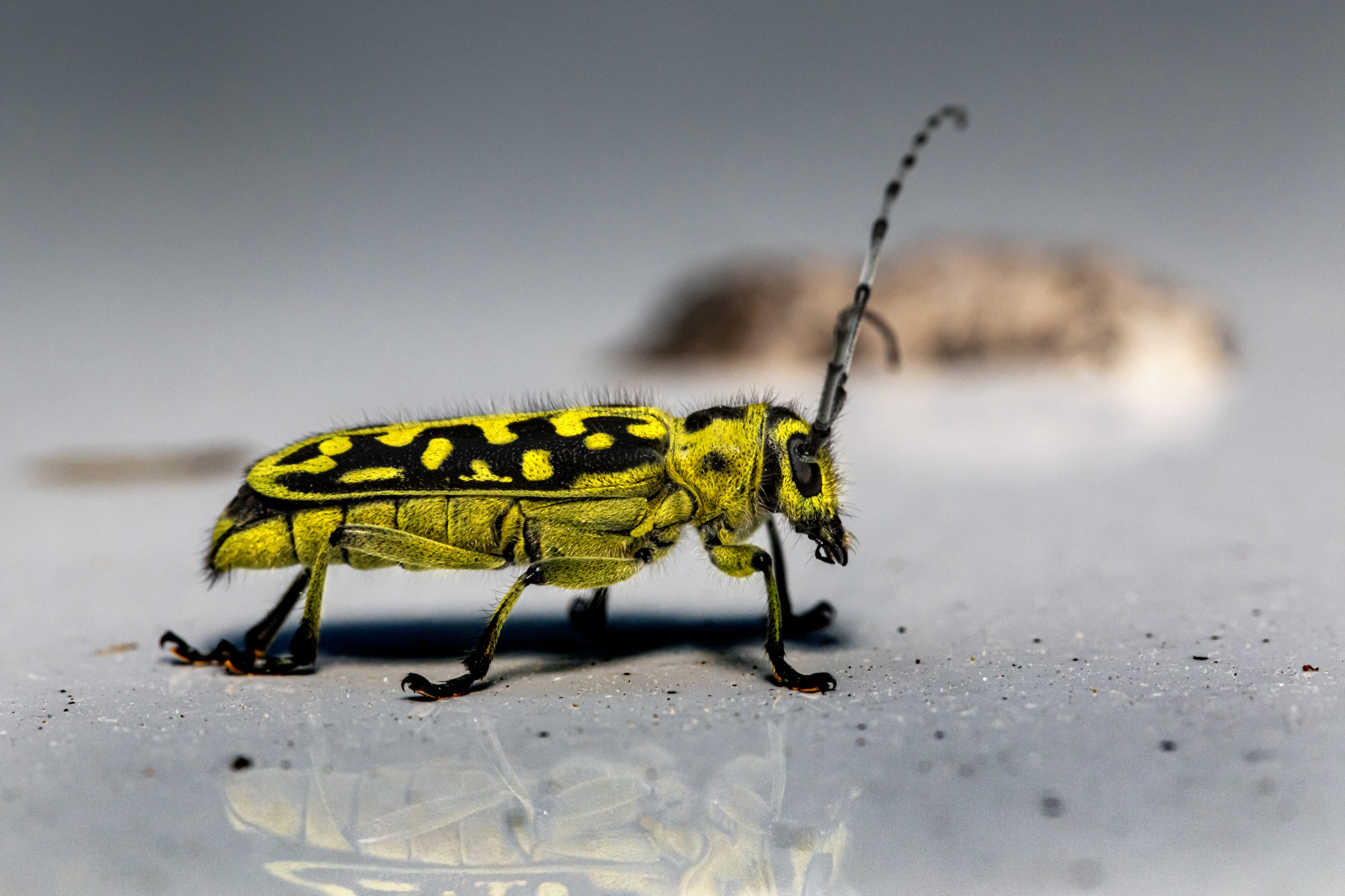The Longhorn Beetle (Saperda scalaris) is a striking insect known for its elongated body and distinctive antennae, which can be as long as or even longer than its body. With its sleek, cylindrical form and intricate patterning, this beetle cuts a distinctive figure among its woodland habitat. Its name “Longhorn” refers to the extended antennae, which resemble the horns of cattle.
Found in forests and woodlands across Europe and Asia, the Longhorn Beetle plays an important role in forest ecosystems as a decomposer, breaking down dead and decaying wood. Its larvae bore into the wood of various deciduous trees, including oak, beech, and poplar, where they feed on the inner bark and create tunnels as they grow.
The adult Longhorn Beetle emerges from its larval stage in the warmer months, typically during spring or early summer, and can often be seen basking in the sunlight on tree trunks or branches. While the adults feed on pollen, nectar, and plant sap, they are not considered significant pests and generally do not cause damage to living trees.
Despite their relatively benign presence, Longhorn Beetles are valued by entomologists and nature enthusiasts for their striking appearance and fascinating life cycle. Their presence serves as a reminder of the intricate relationships that exist within forest ecosystems, highlighting the importance of biodiversity and the role of insects in maintaining ecological balance.
Views: 550
Subscribe to the newsletter:
